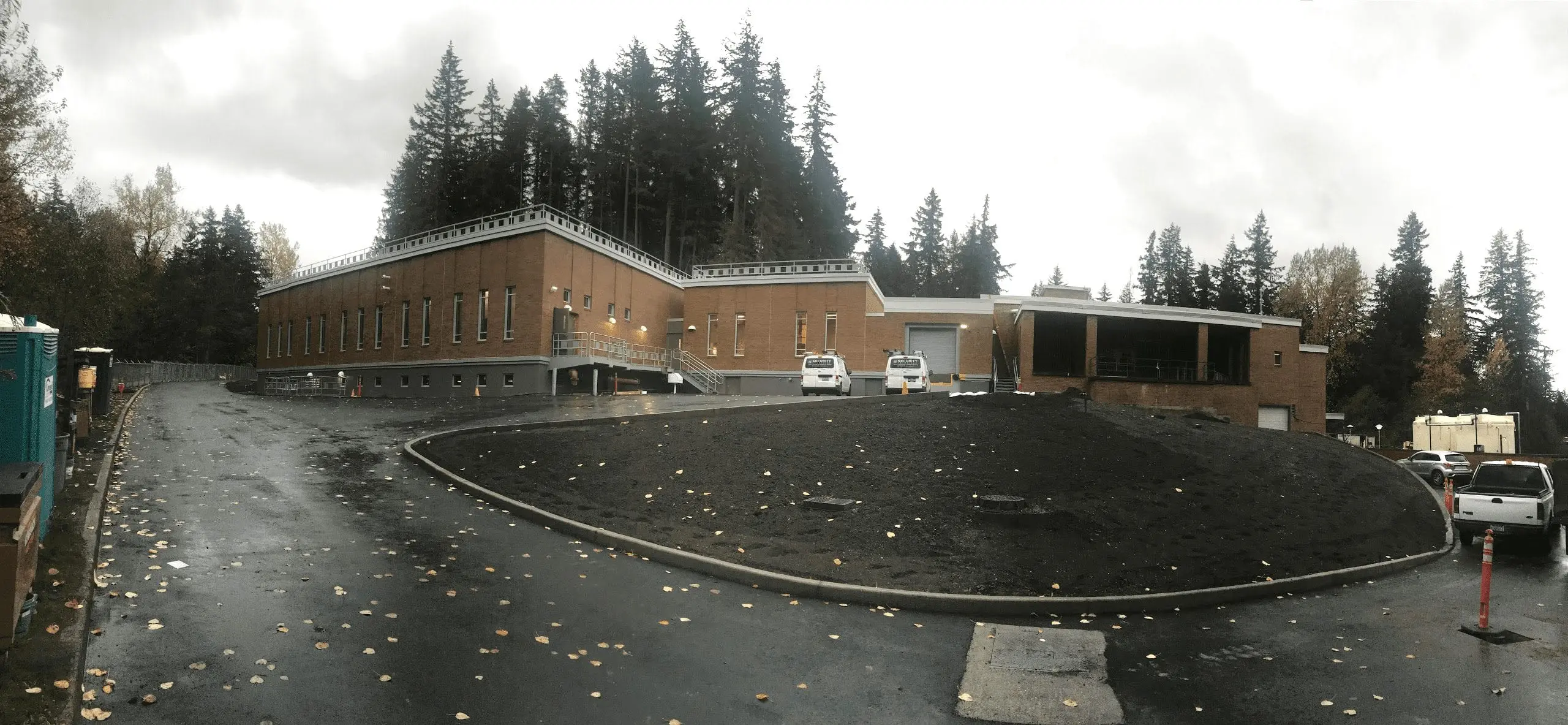Two City of Bellingham projects have received national recognition from the U.S. Environmental Protection Agency (EPA.) The Bellingham projects won EPA awards in the WATERS (Well-planned, Affordable, Transferable, Efficient, Resilient, Sustainable) and PISCES (Performance and Innovation in the SRF Creating Environmental Success) and WATERS (Well-planned, Affordable, Transferable, Efficient, Resilient, Sustainable) programs.
1) Bellingham's Dissolved Air Flotation (DAF) water pretreatment and on-site hypochlorite generation project (pictured) received one of only six 2018 WATERS awards given in Region 10 which includes Alaska, Oregon and Idaho as well as Washington. Bellingham recently opened the state's first DAF facility, built alongside the Water Treatment Plant, as the best option to address filter clogging due to algae from Lake Whatcom, the City's drinking water source.
During the summer, clogged filters reduced filter run times, which would result in less treated water being produced, and more treated water needed to backwash those filters. That process was expensive and reduced the quantity of treated water available for consumption.
Dissolved air flotation is very effective at removing algae, increasing filter run times and creating more predictable source water quality.
In addition to DAF treatment, the City converted the existing gas chlorination system to on-site hypochlorite generation for safety reasons and updated its treatment plant controls to accommodate the new processes.
The state's Drinking Water State Revolving Fund (DWSRF) was established by the EPA in the late 1990's. Since then, borrowers have utilized the program to help fund projects that deliver a public health benefit, among other goals. Fund borrowers may be considered for a WATERS award. The WATERS honor was established in 2016 “to provide recognition to the cream of the crop DWSRF-funded projects,” according to Rick Green, EPA Region 10 coordinator.
The City received a DWSRF loan for approximately $12 million to complete this project at 1.5% interest for a 20-year term. The City also installed solar panels (funded by a grant from Northwest Clean Air Agency) to off-set some of the energy demands of the DAF process.
2) Bellingham was also honored as a “Recognized Project” by the EPA PISCES program for its project, funded by the EPA's Clean Water State Revolving Fund (CWSRF), to reroute Squalicum Creek. It was the only honor given in Washington State and one of just three in EPA Region 10.
According to the PISCES program director Andrew Sawyers, the Squalicum Reroute project“ is a testament to the fund's role in building infrastructure, while providing many benefits for public health, [the] local economy and the environment.”
Squalicum Creek Reroute, a multi-phase project, addresses a habitat problem created when the construction of I-5 resulted in two shallow gravel excavation pits that eventually became ponds. The ponds absorbed solar heat, which raised the water's temperature, lowered the dissolved oxygen and increased fecal coliform concentrations in Squalicum Creek as it flowed through the ponds. That created an inhospitable environment for Chinook and Steelhead salmon, both listed under the Endangered Species Act.
Using $3.6 million in CWSRF financing toward project costs, phases one and two rerouted nearly a mile of Squalicum Creek into a new channel, eliminated a fish passage barrier, reconnected the stream with its floodplain and restored 10 acres of riparian and wetland habitat.
This project is an example of sustainable restoration with benefits to water quality, habitat and recreation. The new channel is narrower to prevent stagnation and heating, has large woody debris for habitat complexity, and can accommodate storm events with wetlands and forest to absorb higher flows. In 2016, the Phase 1 and 2 projects were named the American Public Works Association's National Environmental project of the year.
(L-to-R: EPA's Rick Green, Analiese Burns and Rob Johnson of Public Works, Mayor Kelli Linville, Steve Bradshaw PW)

